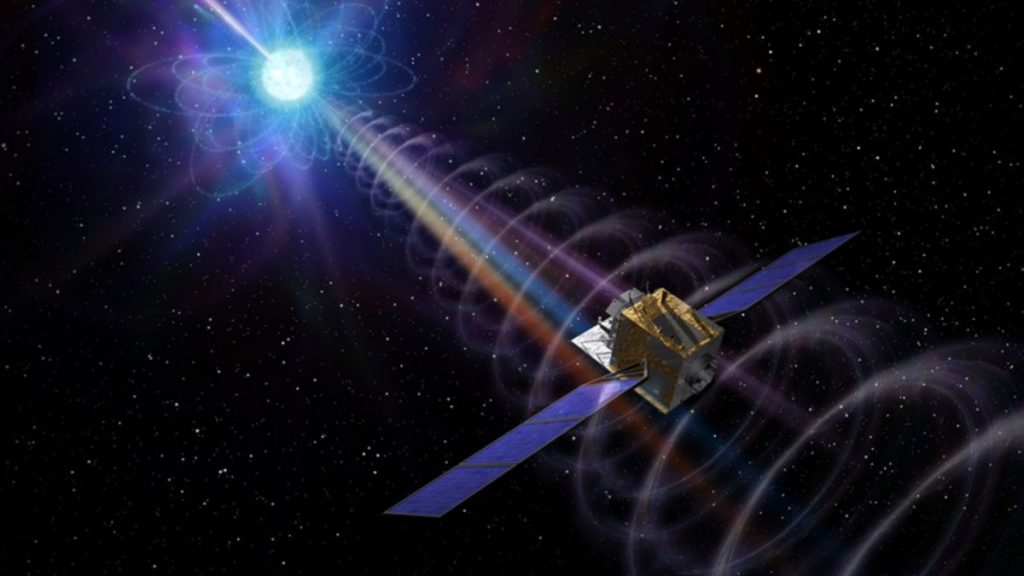
China’s X-ray observatory detects strongest magnetic field ever recorded (Image Credit: Space.com)
A Chinese X-ray telescope has detected the strongest-ever magnetic field recorded by making observations of a rapidly-spinning neutron star, or magnetar.
Insight, also known as the Hard X-ray Modulation Telescope (HMXT), launched in 2017 and is able to observe a broad range of x-ray energy photons.
A team of researchers now report findings from observations of the x-ray spectrum of magnetar J0243.6+6124, indicating a magnetic field of more than 1.6 billion Tesla, nearly double the previous record reading for a magnetar.
Related: The latest news about China’s space program
Observations of magnetars show so-called cyclotron absorption lines in the X-ray energy they emit. The energy levels of the absorption lines correspond to the magnetic field of a neutron star, allowing astronomers to measure their strength.
The findings were obtained jointly by the Key Laboratory for Particle Astrophysics at the Institute of High Energy Physics (IHEP) of the Chinese Academy of Sciences and the Institute for Astronomy and Astrophysics, Kepler Center for Astro and Particle Physics, University of Tübingen (IAAT).
The new detection beats the previous record, also measured by Insight back in 2020, estimated at 1 billion Tesla. The detection of the field around the also provides further evidence that the magnetic fields near the surface of neutron stars are highly complex, including multipole and dipole fields.
For comparison, the Earth’s magnetic field, which crucially shields life on the planet from the harmful solar wind, is just 0.0000305 Tesla (opens in new tab).
Neutron stars form when massive stars run out of fuel and collapse, with the tremendous forces crushing the remaining material so much that even protons and electrons fuse to form neutrons. These balls of neutrons, sometimes spinning hundreds of times per second, can have immensely strong magnetic fields. And a few have fields thousands of times greater than the average neutron star, making them magnetars.
If you got within around 1,000 kilometers of one of these, the field would so greatly disturb your molecular structure that you would dissolve.
The paper was published on June 28 in Astrophysical Journal Letters (opens in new tab).
Follow us on Twitter @Spacedotcom (opens in new tab) or on Facebook (opens in new tab).





